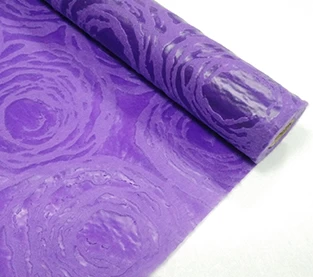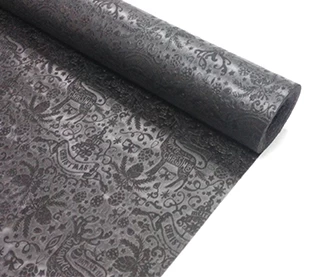Product: ES Material Fiber Nonwoven Fabric For Packaging
Raw Material: PP+PE
Nonwoven Technology: thermal bonded
Dotted Design: dot or plain
Gram: 25 gsm - 30 gsm
Color: White
Specification: custom
Sample: Can be provided without charge, freight to be collect
Applications:
Medical(20-60gsm): face masks,diapers,bed sheets,curtains,pillow covers,sanitary,etc
Packaging(25-30gsm): tea bag, coffee bag/filter paper, dust-proof covers.etc
Product: ES Thermal Bonded Non Woven Fabric For Tea Bag
Raw Material: PP+PE
Nonwoven Technology: thermal bonded
Dotted Design: dot or plain
Gram: 25 gsm - 30 gsm
Color: White
Specification: custom
Sample: Can be provided without charge, freight to be collect
Applications:
Medical(20-60gsm): face masks,diapers,bed sheets,curtains,pillow covers,sanitary,etc
Packaging(25-30gsm): tea bag, coffee bag/filter paper, dust-proof covers.etc
Product: Composite Non Woven Paper Desiccant Packaging Material
MOQ: 1000 kg
Material: Composite Non Woven Paper
Specification: Custom sizes.
Design: Welcome custom logo and design. Welcome OEM.
Color: Full Color of CMYK,Pantone Color as customer requirements
Weight: Based on size & material,thickness
Delivery Time: 10-15 days after confirmed the final artwork and order
Product: Desiccant Wrapping Paper
MOQ: 1000 kg
Material: DuPont Material
Specification: Custom sizes.
Design: Welcome custom logo and design. Welcome OEM.
Color: Full Color of CMYK,Pantone Color as customer requirements
Weight: Based on size & material,thickness
Delivery Time: 10-15 days after confirmed the final artwork and order
Product: Bi-component Non Woven Fabric Desiccant Packaging Material
MOQ: 1000 kg
Material: Bi-component Non Woven Fabric
Specification: Custom sizes.
Design: Welcome custom logo and design. Welcome OEM.
Color: Full Color of CMYK,Pantone Color as customer requirements
Weight: Based on size & material,thickness
Delivery Time: 10-15 days after confirmed the final artwork and order
Product: Spunbond Non Woven Fabric Custom Desiccant Packaging Material
MOQ: 1000 kg
Material: Spunbond Non Woven Fabric
Specification: Custom sizes.
Design: Welcome custom logo and design. Welcome OEM.
Color: Full Color of CMYK,Pantone Color as customer requirements
Weight: Based on size & material,thickness
Delivery Time: 10-15 days after confirmed the final artwork and order
With economic growth, people's demand for non-woven fabrics(Polypropylene Non Woven Fabric Manufacturer) continues to increase, and my country's non-woven fabric production has also developed rapidly. Especially in recent years, non-woven equipment and production capacity based on spunbond, spunlace and hot air processes have grown rapidly.
According to forecasts, in the next 5 years, the annual output of non-woven fabrics(PP Non Woven Fabric Factory) will still maintain a growth rate of 6%-10%, and the annual output of non-woven fabrics will exceed 6.8 million tons by 2023. However, many non-woven fabric manufacturing entrepreneurs lament that market demand has failed to keep pace with production capacity, and overcapacity has led to price competition and equipment shutdowns. With the upgrading of equipment and the improvement of research and development capabilities, non-woven fabric enterprises should not only produce more high-quality, high-specification, and high-end products, they should also look at the world, explore a broader market, and make the non-woven fabric industry go further. development of.
Below, I will provide some data analysis on some major non-woven fabric markets, hoping to help the decision-making of enterprise development.
According to the analysis of the current market research report, the global spunbond non-woven fabric(China SS Non Woven Fabric Supplier) market is estimated to be worth US$12.7 billion in 2018 and is expected to reach US$18.3 billion by 2023, with a compound annual growth rate of 7.6% from 2018 to 2023. Compared with other non-woven fabrics, spunbond non-woven fabrics are becoming more and more popular, and their use in the medical field is also increasing. The high demand for polypropylene spunbond non-woven fabrics is a key factor driving the growth of this market. The high cost of the final product may affect the pricing structure of the intermediate industry, and the stagnant growth of baby diapers in mature markets has also become a key constraint on the growth of spunbond nonwovens in the Western market.


In 2018, disposable products accounted for a larger share of the spunbond non-woven fabric market. Polypropylene is still the largest material ratio in the spunbond non-woven fabric market. Compared with other raw materials, one of the main advantages of polypropylene is its economy and output, which makes it the preferred material, especially for disposables. Products such as adult incontinence products, baby diapers and sanitary napkins. The acquisition of most of this market share is mainly due to the cost-effectiveness of the material and the key functional characteristics that make it the material of choice. At the same time, many companies are carrying out extensive research and development to improve the biodegradability of disposable spunbond nonwoven products. For example, polylactic acid spunbond nonwovens are widely known for their biodegradability and biocompatibility. attention.
The Asia-Pacific region is expected to lead the growth of the global spunbond non-woven fabric market. The growth of the Asia-Pacific spunbond non-woven fabric market is mainly driven by the increase in disposable income and the increase in consumption of disposable products. Forecasts show that the spunbond nonwovens market in the Asia-Pacific region will grow at a very high compound annual growth rate from 2018 to 2023. This growth is mainly attributed to the fact that countries such as China, Japan, India, and South Korea have responded to spunbond High demand for non-woven fabrics.
In 2019, the global demand for spunlace nonwovens is expected to reach 1.38 million tons, or 31.1 billion square meters, worth US$6.2 billion. Spunlace non-woven fabrics have seen high growth and high profit margins in the face of new application requirements for wiping products and technological innovations. This trend will continue until 2024, but it will also face overcapacity. New challenges.
According to in-depth research, in 2024, continuous demand will promote the compound annual growth rate of global spunlace nonwoven consumption to 7.9%, 2.01 million tons. Future profitability will also depend on the continuous development of existing spunlace processes and the implementation of new production technologies to meet the requirements of end users and the market.
The global consumption of wet-laid non-woven fabrics produced by the two processes of wet-laid or DRC was 460,900 tons in 2018, which is equivalent to 11.3 billion square meters and 1.3 billion US dollars. By 2023, the annual growth rate of tonnage will reach 5.0%, the annual growth rate of square meter consumption will be 5.4%, and the annual growth rate of consumption amount will be 5.6%. With the increase in value per ton and per square meter-the growth of more "high-value" special products, such as battery separators and wall coverings.
Overall, the market demand for non-woven fabrics is still growing, but the requirements for product performance and innovative applications are also constantly improving. While increasing equipment investment and production capacity, companies must also be closer to market needs. Only by developing global markets and growth points can we avoid the dilemma of overcapacity.